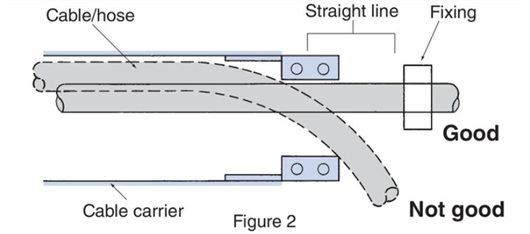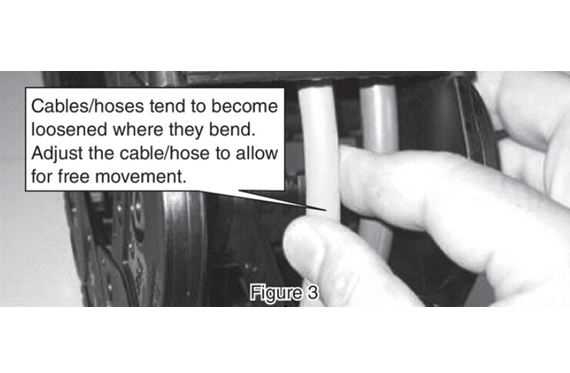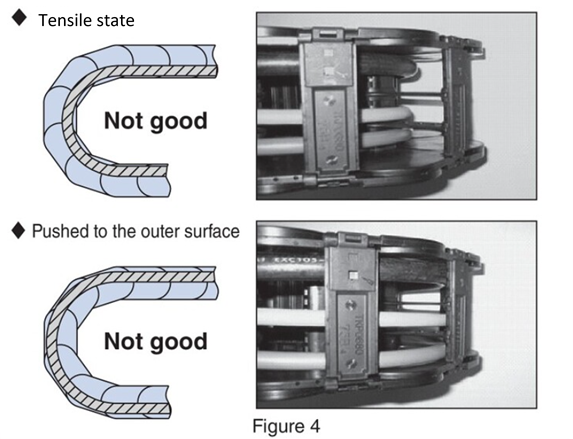Technical Data Cable Carriers (CABLEVEYOR) - Handling of cable carriers - Cable wiring and hose connections, maintenance
Cable wiring and hose connections
■Use highly flexible cables/hoses for movement offering excellent flexibility and durability over continuous operation.
Use of cables with wire-braided coating is prohibited. The sliding of the cable will cause damage to both the cable carrier and the wire-braiding coated cables. Do not use such cables under any circumstances.
■Lay out the cables/hoses in a way that does not allow twisting to occur. Do not pull cables/hoses from a drum or spiral coil as doing so will cause the cable/hose to become twisted. (See Figure 1.)
Make sure the cables/hoses are straight when inserted into the cable carrier. (See Figure 2.)


■Required cable/hose length
Normally, a cable length of "(Pitch × No. of links) + Mounting area length = Required cable length" is appropriate.
In the case of a hose, the length of a hose will change due to pressure during use, so "{(Pitch × No. of links) + Mounting area length} × 1.015 = Required hose length" is appropriate.
Please note that a coefficient of 1.015 allows for hose shrinkage, but because this will depend on the type of hose, be sure to check with the hose manufacturer.
■To prevent tension where cables/hoses bend from being pressed against the outer surface of the cable carrier, arrange the cables/hoses loosely (with enough space to "fl oat" above the inner circumference surface inside the cable carrier) to allow freedom of movement. (See Figure 3 and Figure 4.)


■To prevent unnecessary tension from being applied to the cable/hose, and to maintain the length within the cable carrier, use clamps for fixing at the moving end and the fixed end. (See Figure 5.) Note that cables and hoses should not be fixed within the cable carrier.
■Lay out the cables/hoses in a row horizontally so that they do not overlap. For models that allow dividers to be installed, use dividers when arranging the cables/hoses.
■When using stayed systems for cables/hoses, note that the inner and outer circumferences are not the same. Ensure the required length along the center line for each of the cables/hoses is provided. However, when using dividers to separate cables/hoses into stayed systems, the sliding of the cables/hoses will cause wear to occur more quickly. As such, it is recommended that the cables/hoses be arranged in a row horizontally.

Maintenance
■The link or stay bolts may come loose due to vibrations during transportation or operation. Check these bolts regularly following operation. (TK Series/TKS Series/TKH Series)
■Take care to prevent obstructions from falling onto or from adhering to the guide channel.
■Check regularly for smooth back-and-forth operation of the cable carrier. Also check whether the cable/hose is being forcibly pulled or if continuous bending of the cable has caused the length to change within the cable carrier.

